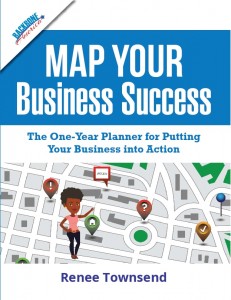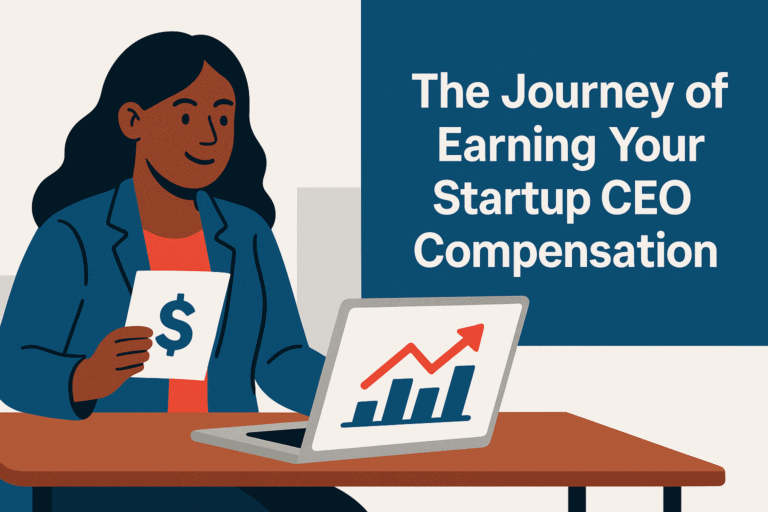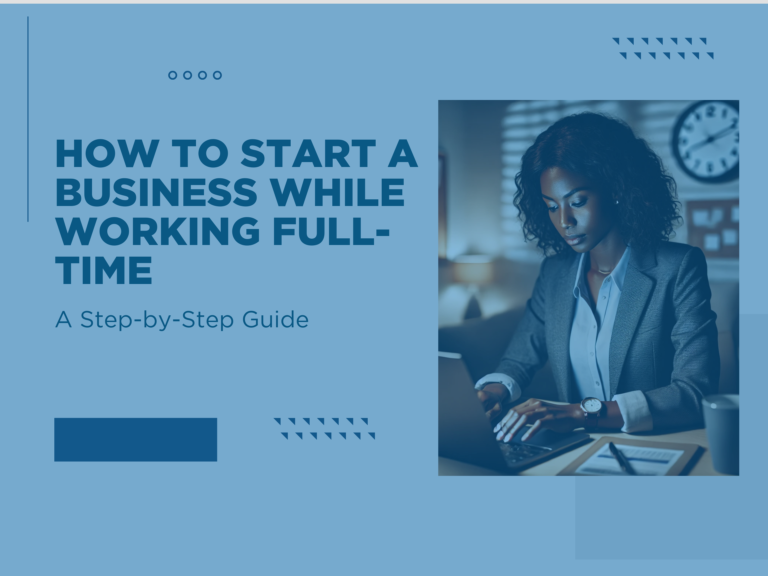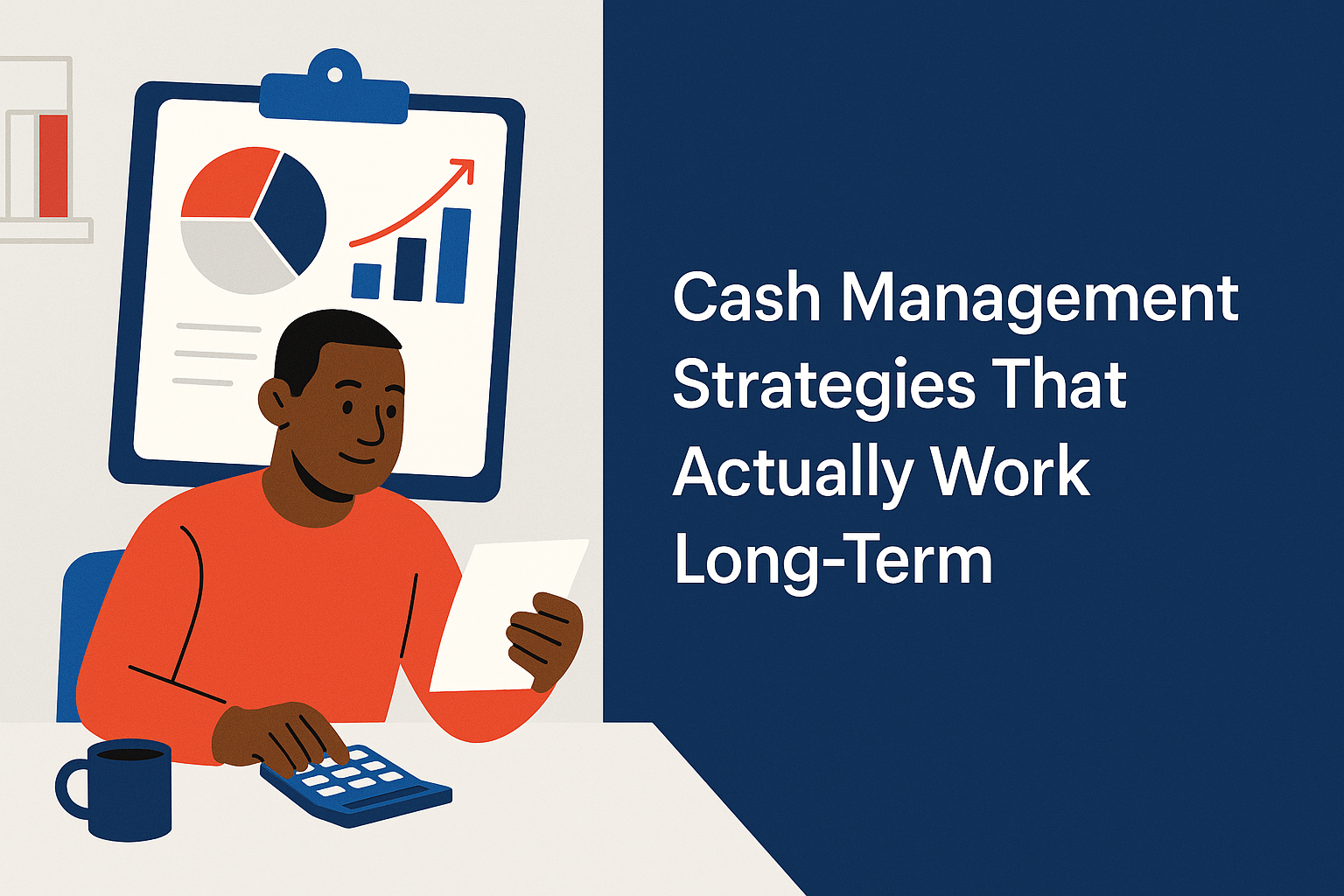Starting a business may seem challenging. There are so many things to consider, from legal requirements to marketing strategies, that it’s easy to get overwhelmed. As a business advisor, I loved helping many entrepreneurs start their own business. Whether I help them individually or in a workshop, the nitty gritty is kind of fun. I’ve found it doesn’t have to be scary or overly difficult. Sometimes it just takes a little hand holding to get through the steps. To help you navigate this process, I’ve created the ultimate business startup checklist.
Step 1: Develop a business plan

Step 2: Choose a legal structure
The next step in this business startup checklist is to decide on a legal structure for your business. There are several main types of legal structures for businesses, each with its own advantages and disadvantages. I’m always hesitate to make recommendations in this area, because this will determine your tax obligations, liability, and ownership structure. For now, I’ll give you a quick overview of some of the types.
Sole proprietorship
This is the simplest and most common type of legal structure for small businesses. In a sole proprietorship, the business is owned and operated by a single individual, who is personally responsible for all debts and liabilities of the business. This structure is easy to set up and maintain, but offers no legal protection for the owner’s personal assets.
Partnership
A partnership is a legal structure in which two or more individuals share ownership of a business. The partners are personally responsible for all debts and liabilities of the business, and share in the profits and losses. Partnerships can be either general partnerships, in which all partners share equal responsibility and liability, or limited partnerships, in which one or more partners have limited liability.
When it comes to a Sole Proprietorship and a Partnership, I encourage my clients to purchasing business insurance. I talk a little more about this in Step 8: Obtain Insurance. Often times, business insurance can be your best protection against liability with these two types of businesses structures.
Limited Liability Company (LLC)
An LLC is a hybrid legal structure that combines the benefits of a corporation with the simplicity of a partnership. LLC owners, or “members,” are not personally liable for the debts and liabilities of the business, and can choose to be taxed as a partnership or a corporation. One caution I might make is the need to have a clear separation of personal and business financials. I say this, because with an LLC, it’s easy to commingle funds. However, when that happens, you can lose the limited liability protection.
Corporation
A corporation is a legal entity that is separate from its owners. It is owned by shareholders, who elect a board of directors to oversee the business. Corporations offer the greatest level of legal protection for owners’ personal assets, but are more complex and expensive to set up and maintain. Even though I say this, it’s important to understand that the complexity and cost vary by state. For example, in North Dakota the articles of incorporation for a corporation are less than an LLC.
Cooperative
A cooperative is a type of business owned and operated by its members, who share in the profits and decision-making. Cooperatives are often used in agriculture, retail, and other industries where groups of small producers band together to gain greater bargaining power.
Within the main types listed above are subcategories also. I’m not going to go into detail. However, I will say that each legal structure has its own unique advantages and disadvantages. The best choice for a particular business depends on a variety of factors. This includes the size and scope of the business, the level of risk involved, and the owners’ preferences for control and liability. As I always tell my clients, it’s important to consult with a lawyer or accountant to determine the best legal structure for your specific business.
Step 3: Register your business
Once you’ve decided on your business structure, the next step is to register your business with the appropriate state and federal agencies. Usually this is done with the Secretary of State or Lieutenant Governor. To register your business, you’ll need to choose a name that is unique and memorable, and make sure it is available for use in your state. Your state may also require you to obtain business license and permits. Finally, I always recommend obtaining a tax ID number from the IRS.
Step 4: Secure financing
Determine how you will finance your startup. It may be through personal savings, loans, investors, or crowdfunding. In a way, I consider this part of your business planning. Whether you have a lean business with little to no startup or one that takes a significant investment, it’s important to understand your business finances.
Step 5: Choose a business location
Location, location, location. The next step in the business startup checklist is to choose a location for your business. This may be a home-based business, which I’m quite fond of due to its low startup costs. However, it can also be a physical location, such as a storefront, office, or home-based. Regardless of you decision, be sure to consider factors like rent, accessibility, and zoning regulations. For example, when I worked from home as a financial advisor, I had to get my neighbors to sign off on my home-based business.
Step 6: Develop a marketing strategy
Next, you’ll need to develop a marketing plan to attract customers and build your brand. Business marketing strategies are essential for promoting products or services, reaching target audiences, and generating revenue. With the world going digital, many strategies focus on reaching individuals online. This may include social media, content marketing, and email marketing. However, online marketing strategies can also be combined with traditional ones, such as advertising, networking, and word of mouth.
Step 7: Hire employees
Not all businesses require employees. However, if you plan on hiring employees, it’s important that you comply with labor laws and regulations. Also, be sure to develop a hiring plan. This may require that you establish business processes and procedures, such as accounting, inventory management, and customer service. Though I don’t push entrepreneurs into hiring employees, I have noticed a trend. A scalable business can provide an opportunity for financial freedom and most independence. It can puts you in a position to stop trading time for money.
Step 8: Obtain insurance
Finally, protect your business and assets by obtaining appropriate insurance coverage, such as liability, property, and workers’ compensation insurance. I’ve often said that business insurance can offer you even greater protection than what comes with a limited liability structure. It can be relatively inexpensive but can be invaluable.
Final thoughts on the business startup checklist
By following this business startup checklist, you’ll have a solid foundation to launch your business with confidence. Remember to stay flexible and adapt to changes as needed, and seek the guidance of professionals like lawyers, accountants, and business advisors as needed. With hard work and determination, you can turn your startup dream into a successful reality.





